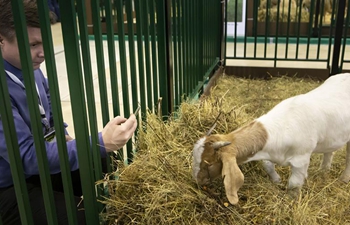ROME, Feb. 7 (Xinhua) -- The Italian population kept following a downward trend in 2018, shrinking by over 90,000 to an estimated 60.39 million people, the National Institute of Statistics (ISTAT) said on Thursday.
Releasing its annual demographic report up to Jan. 1, the Institute said the number of Italian nationals dropped annually by 3.3 per thousand to 55.15 million people.
In the same period, non-national residents grew by 17.4 per thousand up to 5.23 million, representing 8.7 percent of total population in 2018 (8.4 percent in 2017).
Net international migration reached 190,000, showing a slight increase over the previous year, according to ISTAT. Immigration involved 349,000 people, and emigration 160,000, respectively growing by 1.7 percent and by 3.1 percent compared to 2017.
Meanwhile, natality also kept decreasing, with the number of live births dropping annually by 9,000 to 449,000, and reaching "a new minimum level."
"Compared to 2008, there were 128,000 live births less," ISTAT highlighted.
The number of deaths dropped by 13,000 to 636,000, and the natural balance (-187,000) was "the second lowest ever, following that in 2017 (-191,000)," the agency noted.
Yet, the total fertility rate remained unchanged on an annual base, with 1.32 children per woman, and the mean age at childbearing reached 32 years for the first time.
Data also suggested a direct connection between fertility and socio-economic conditions across the country.
The country's highest rate (1.76 children per woman) was in fact registered in northeast autonomous province of Bolzano, which is among the richest areas in Italy. The wealthy northern regions followed, all of them showing a fertility rate above the national average.
The southern regions -- traditionally poorer compared to Northern Italy -- followed an opposite trend, with fertility rates below the national level.
Finally, the agency registered a new annual increase in life expectancy at birth, which grew to 80.8 years for men (+ 0.2 years), and to 85.2 years for women (+ 0.3 years) in 2018.
Elders kept representing a large portion of the Italian population, both in absolute and in relative terms, according to the statistical agency.
Over-65 people were 13.8 million, representing 22.8 percent of total population (against 22.6 percent in 2017), while youth up to the age of 14 were some 8 million, or 13.2 percent.













